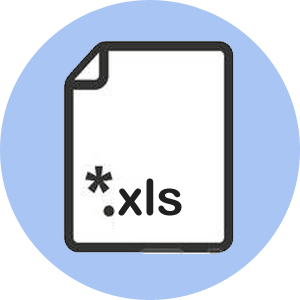ProGP400 (Sublancin)
Home -> ProGPdb -> Search ProGP -> Display data
| ProGP ID | ProGP400 (Sublancin) |
| Validation Status | Characterized |
| Organism Information | |
| Organism Name | Bacillus subtilis 168 |
| Domain | Bacteria |
| Classification | Phylum : Firmicutes Class : Bacilli Orders : Bacillales Family : Bacillaceae Genus : Bacillus Species : subtilis |
| Taxonomic ID (NCBI) | 1423 |
| Genome Information | |
| GenBank | AF014938.1 |
| EMBL | AF014938 |
| Gene Information | |
| Gene Name | sunA |
| NCBI Gene ID | 939121 |
| GenBank Gene Sequence | NC_000964.3 |
| Protein Information | |
| Protein Name | Sublancin |
| UniProtKB/SwissProt ID | P68577 |
| NCBI RefSeq | NP_390031.1 |
| EMBL-CDS | AAC63531.1 |
| UniProtKB Sequence | >sp|P68577|SUNA_BACSU SPBc2 prophage-derived bacteriocin sublancin-168 OS=Bacillus subtilis GN=sunA PE=1 SV=1 MEKLFKEVKLEELENQKGSGLGKAQCAALWLQCASGGTIGCGGGAVACQNYRQFCR |
| Sequence length | 56 AA |
| Subcellular Location | Secreted |
| Function | SPβ prophage-derived bacteriocin sublancin-168. It has antimicrobial activity against Gram-positive bacteria. It is stable at both low and high pH and lacks free thiols. |
| Protein Structure | |
| PDB ID | 2MIJ |
| Glycosylation Status | |
| Glycosylation Type | S- (Cys) linked |
| Experimentally Validated Glycosite(s) in Full Length Protein | (Propeptide: 1-19) C41 |
| Experimentally Validated Glycosite(s ) in Mature Protein | C22 |
| Glycosite(s) Annotated Protein Sequence | >sp|P68577|SUNA_BACSU SPBc2 prophage-derived bacteriocin sublancin-168 OS=Bacillus subtilis GN=sunA PE=1 SV=1 MEKLFKEVKLEELENQKGSGLGKAQCAALWLQCASGGTIGC*(41)GGGAVACQNYRQFCR |
| Sequence Around Glycosites (21 AA) | LQCASGGTIGCGGGAVACQNY |
| Technique(s) used for Glycosylation Detection | Higher mass observed using mass spectrometry |
| Technique(s) used for Glycosylated Residue(s) Detection | Tandem ESI-MS (electrospray ionization quadrupole-TOF mass spectrometry) analysis after chymotrypsin digestion. |
| Protein Glycosylation- Implication | Glucosylation is essential for its bioactivity. |
| Glycan Information | |
| Glycan Annotation | UDP-Glc, UDP-GlcNAc, UDP-Gal, GDP-Man and UDP-Xyl can serve as substrates for SunS GTase but UDP-β-D-glucose is most efficiently used. |
| Technique(s) used for Glycan Identification | GC-MS (gas chromatography-mass spectrometry) analysis after trimethylsilylation |
| Protein Glycosylation linked (PGL) gene(s) | |
| OST ProGT ID | ProGT46 |
| Characterized Accessory Gene(s) | SunS is a glycosyltransferase with very relaxed substrate specificity. It shows strong regioselectivity and chemoselectivity for glycosylation of a thiol. |
| Additional Comment | S-linked glycosylation is very rare. It has been observed that cysteine glycosylation leads to the formation of more stable products (both at low and high pH) than does serine glycosylation. |
| Literature | |
| Year of Identification | 2011 |
| Year of Identification Month Wise | 2011.02 |
| Year of Validation | 2011 |
| Reference | Oman, T.J., Boettcher, J.M., Wang, H., Okalibe, X.N. and Van Der Donk, W.A., 2011. Sublancin is not a lantibiotic but an S-linked glycopeptide. Nature chemical biology, 7(2), pp.78-80. |
| Corresponding Author | Wilfred A. van der Donk |
| Contact | Howard Hughes Medical Institute and Roger Adams Laboratory, Department of Chemistry, University of Illinois at Urbana-Champaign, 600 South Mathews Avenue, Urbana, Illinois 61801, USA |
| Reference | Stepper, J., Shastri, S., Loo, T.S., Preston, J.C., Novak, P., Man, P., Moore, C.H., Havlíček, V., Patchett, M.L. and Norris, G.E., 2011. Cysteine S-glycosylation, a new post-translational modification found in glycopeptide bacteriocins. FEBS letters, 585(4), pp.645-650. |
| Corresponding Author | Gillian E. Norris |
| Contact | Institute of Molecular Biosciences, Massey University, Palmerston North, New Zealand. |
| Reference | Wang, H. and Van Der Donk, W.A., 2011. Substrate selectivity of the sublancin S-glycosyltransferase. Journal of the American Chemical Society, 133(41), pp.16394-16397. |
| Corresponding Author | Wilfred A. van der Donk |
| Contact | Howard Hughes Medical Institute and Roger Adams Laboratory, Department of Chemistry, University of Illinois at Urbana-Champaign, 600 South Mathews Avenue, Urbana, Illinois 61801, USA |
| Reference | Garcia De Gonzalo, C.V., Zhu, L., Oman, T.J. and Van Der Donk, W.A., 2014. NMR structure of the S-linked glycopeptide sublancin 168. ACS chemical biology, 9(3), pp.796-801. |
| Corresponding Author | Wilfred A. van der Donk |
| Contact | Howard Hughes Medical Institute and Roger Adams Laboratory, Department of Chemistry, University of Illinois at Urbana-Champaign, 600 South Mathews Avenue, Urbana, Illinois 61801, USA |

